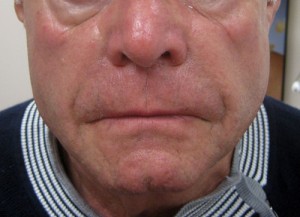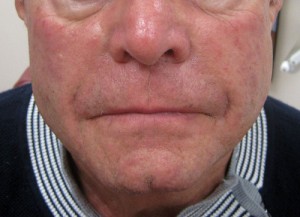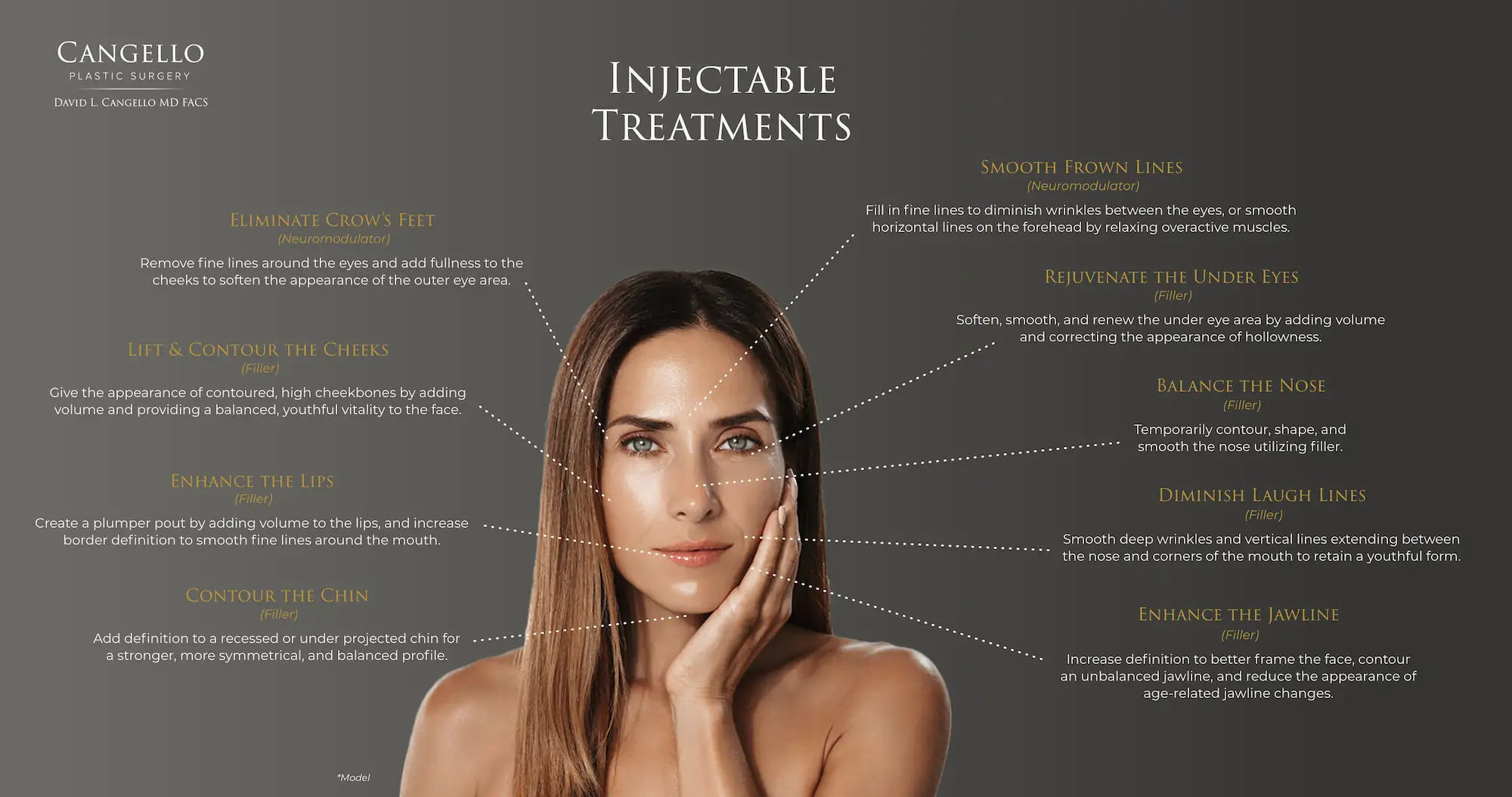Dermal Fillers with Dr. Cangello
While surgical options like facelifts can produce excellent results for treating lines and lack of facial volume, not everyone is a candidate for surgery. Some also feel that their cosmetic concerns aren’t advanced enough to warrant a surgical procedure. Dermal fillers provide an ideal solution for men and women seeking non-surgical facial rejuvenation.
At his NYC practice, board-certified plastic surgeon Dr. David Cangello administers all injectables himself, allowing patients to achieve natural-looking results. In addition to anti-aging treatments, Dr. Cangello also offers nonsurgical rhinoplasty, lip augmentation, cheekbone contouring, and under eye filler for tear troughs.
Contact Us today at (212) 644-4416 to schedule your consultation for dermal fillers in NYC.
Benefits of Injectable Dermal Fillers
Convenient and effective, injectables deliver long-lasting results without the need for surgery, heavy anesthetics, or a lengthy recovery period. They can be used for a variety of cosmetic purposes, including:
- Smoothing fine lines and wrinkles
- Restoring volume to areas such as the temples, cheeks, and under the eyes
- Enhancing the lips
- Providing subtle lift to areas of the face that are starting to droop
- Filling in surface depressions, including marionette lines, nasolabial folds, and acne scars
How Injectable Dermal Fillers Work
Layers of fat under our skin provide a kind of scaffolding to our facial features, but subcutaneous facial fat atrophies over time, which leads to a loss of volume. Collagen and skin elasticity also decline, contributing to fine lines and wrinkles. Together, these age-related changes create a gaunt appearance and cause the skin to lose its youthful texture. Dermal fillers, sometimes called soft tissue fillers, counteract this by filling in creases and wrinkles and replenishing volume in areas of the face that have lost fullness. They can also be used to augment lips and to contour the face and bring symmetry and definition to areas such as the nose and jawline.
Most fillers are made from hyaluronic acid (“HA”), which is a naturally occurring substance found in the body that helps the skin retain moisture. These types are essential “space-occupying” fillers that fill up space that was once filled with fat. Other fillers work by stimulating collagen production, which in turn increases volume.
Preparing for Dermal Fillers
There is very little you need to do to prepare for an injectable treatment. Dr. Cangello may advise you to refrain from drinking alcohol or using blood thinning medications in the days leading up to your appointment, as doing so can help minimize bruising. If you have not had fillers before, if you have questions, or if you are seeking a comprehensive rejuvenation plan, you may want to schedule a consultation appointment. At your consultation Dr. Cangello will discuss your concerns and goals in order to recommend a personalized treatment plan.
What to Expect at Your Dermal Filler Appointment
Injectable filler treatments are an in-office procedure. First, Dr. Cangello will confirm your aesthetic goals and review your treatment plan. He will cleanse the area to be treated and, if needed, apply a topical anesthetic to numb the skin. Many dermal filler formulas contain lidocaine to minimize any discomfort. Treatment time is usually very quick, although it will vary depending on your aesthetic plan.
Recovery After Dermal Fillers
There is no downtime needed after a dermal filler procedure, and many patients resume regular activities right away. You should refrain from strenuous exercise for the rest of the day. You may experience temporary redness, tenderness, or bruising at the injection site.
Dr. Cangello’s Approach to Injectables
As a board-certified plastic surgeon, Dr. Cangello has a thorough understanding of facial anatomy, from the surface of the skin to the underlying structures. He combines this knowledge with an artistic approach when performing facial fillers, allowing a nuanced and customized application. This is key for producing natural-looking results.
The value of having a board-certified plastic surgeon administer your injectables is immense. Dr. Cangello has extensive experience with all facial injectables, and he helps patients explore which particular filler (or combination of products) would best meet their cosmetic goals. Although injectables such as dermal fillers and Botox® are minimally invasive and take only minutes to perform, they still require a great deal of skill and experience to administer. This is why Dr. Cangello conducts all injectables himself, allowing patients to have the highest quality of cosmetic care.
Types of Dermal Fillers
Cangello Plastic Surgery offers a comprehensive selection of dermal fillers to suit patients’ individual needs. Some of the most popular options include the following:
Restylane® is an HA filler, so it is a space-occupying filler and does not stimulate collagen production. In general, its effects last around six months. In specific areas (such as the under-eye hollows) it can last up to nine months or a year. It is a highly versatile filler with specialized formulas that can be used in the lips, temples, nasolabial folds, marionette lines, smile lines, cheeks, and more.
The Restylane® line of fillers includes:
- Restylane® Lyft (formerly known as Perlane®)
- Restylane® Silk
- Restylane® Defyne
- Restylane® Refyne
- Restylane® Kysse
- Restylane® Contour
Juvéderm® is also an HA filler and does not stimulate collagen production. Like Restylane®, there are multiple formulas that are each designed for optimal use in different areas of the face.
The Juvéderm® line of fillers includes includes:
- Juvéderm® Voluma XC
- Juvéderm® Ultra XC
- Juvéderm® Volbella XC
- Juvéderm® Vollure XC
- Juvéderm® Ultra Plus XC
- Juvéderm® Volux
Belotero is HA filler with much less viscosity as compared to the above-mentioned fillers. It is best used for filling stubborn wrinkles that are not adequately treated with Botox®. It also works well in the under-eye area.
Radiesse® is not an HA filler; it is made from calcium hydroxylapatite. It dissolves in the first few weeks following injection. However, it has a volumizing effect through the localized stimulation of collagen production. This is a versatile filler and Dr. Cangello uses throughout the face, as well as for rejuvenation of the back of the hands. In fact, Dr. Cangello is one of a few physicians in the country who participated in the study conducted by Merz Aesthetics (the manufacturer of Radiesse®) to gain FDA approval for its use in hand rejuvenation. In the face, it often lasts around nine months, and in the back of the hands, it can last around one year.
Bellafill is a unique dermal filler that is made of polymethyl methacrylate (PMMA) microspheres. This filler is designed to stimulate collagen and is approved for use in the nasolabial folds (smile lines) as well as the cheeks. Bellafill can last up to 5 years.
For patients who are seeking a permanent solution, fat grafting (“fat transfer”) is an excellent option. During this procedure, fat is taken from a donor area (such as the abdomen or inner thighs) and is transferred or grafted to areas of the face where filler would be used. It is incredibly versatile and can be used in almost any area of the face.
A facial fat transfer is permanent because the fat is actually “grafted,” which means the fat cells establish a new blood supply and indefinitely live in the area they are transferred to. Dr. Cangello was trained by and worked extensively with Dr. Sydney Coleman, one of the pioneers of the fat grafting method. This invaluable experience allowed him to develop techniques that produce long-lasting and natural-looking results.
Patient Experiences
“He is amazing! Made me feel super comfortable as soon as I met him. He is got a lot of patience, explains every little detail and is a great listener. Not to mention his work is absolutely amazing. Got fillers and I can tell he was very experienced and made the effort to make me feel good and look fantastic!”
—J.K.
FAQs About Dermal Fillers
Dermal fillers are appropriate for a wide range of patients, as they can address a number of concerns and they have few contraindications. If you are an adult in good general health, and you are seeking a solution for facial wrinkles or non-surgical facial contouring, dermal fillers could be a great option for you.
While there are very few adverse events associated with dermal fillers, any cosmetic treatment has some risk of side effects. The most common side effects, such as swelling and redness, are temporary. While rare, other side effects can include infection, skin damage or necrosis, and under or over correction.1 It is important to note that you can minimize your chance of adverse events by choosing a qualified and experienced provider, such as a board-certified plastic surgeon.
For most patients, dermal fillers last at least 6 months. Some filler types can last up to 5 years. Your individual results will depend on the type and placement of your dermal filler injections. Dr. Cangello can give you an idea of what to expect before your treatment.
Hyaluronic acid fillers can be dissolved with an injection, but other types of fillers cannot be reversed.
Yes, absolutely. Botox® is a versatile injectable that is excellent at treating movement-related wrinkles, such as crow’s feet and furrows between the eyebrows. For optimal rejuvenation, many patients choose to have both Botox® and dermal fillers performed at the same time.
Yes. While filler cannot replace the effects of surgical rhinoplasty or facial plastic surgery, Dr. Cangello frequently uses filler to treat minor cosmetic irregularities of the nose. It can be used to reduce the appearance of a dorsal bump, and it can also be injected into a drooping nasal tip to provide subtle lift. Fillers are a fantastic option for semi-permanent lip augmentation, as well as cheekbone and jawline contouring and to reduce the appearance of under eye imperfections.
1 American Society of Plastic Surgeons. Dermal Fillers. Available: https://www.plasticsurgery.org/cosmetic-procedures/dermal-fillers/safety Accessed February 6, 2023



